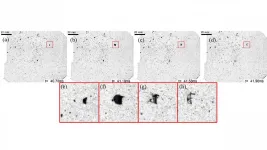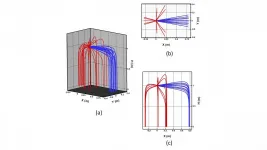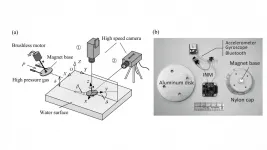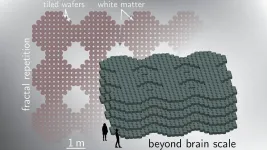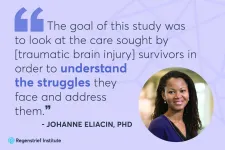(Press-News.org) The lack of accountability, poor communication and insufficient planning plaguing the government’s response to the COVID-19 pandemic -- especially in its early months -- have roots in how the nation responded to 9/11, Hurricane Katrina and the H1N1 swine flu, a new study involving the University of Washington found.
Focusing on the way government agencies assemble and allocate resources - the procurement system - researchers said the successes and shortcomings of responses to other large-scale crises show that a more centralized approach can achieve goals faster and more effectively.
"In the moment of disasters, we prioritize saving lives, but if we also want to achieve other goals, like equity, we need to establish processes and relationships in advance," said Ben Brunjes, an assistant professor of public policy at the UW and co-author of the study, published April 14 in the Journal of Emergency Management.
In theory, government procurement aims to acquire goods and provide services efficiently, equitably and at the lowest possible cost to the taxpayer. When seeking bids and proposals, agencies are supposed to prioritize spending with businesses owned by women and people of color. During an emergency, however, governments suspend many timelines and rules in the interest of speed.
The government's approach to the pandemic, especially in the early months when personal protective equipment and medical supplies equipment were the priority, has been criticized as fragmented and politicized. States were generally left to compete on the open market for N95 masks and ventilators; a lack of information and, ultimately, supplies, plagued the Strategic National Stockpile; and even today, the rollout of COVID-19 vaccines has been inconsistent across states.
The highly infectious nature of the coronavirus, and the impact not only on the health care sector but also on most other areas of society, made the pandemic an almost unprecedented emergency for which few countries were prepared, the researchers point out. The United States, with a mostly privatized health care system and three levels of government (local, state and federal) involved in emergency response functions, faced a massive task in protecting the population.
But the Trump administration's hands-off approach, researchers said, essentially pitted states against each other. Some states had too little and others too much or simply poor-quality supplies, and that opened the door to fraud in the contracting process.
These problems could have been avoided, Brunjes said, if the federal government had recognized and mitigated some of the issues that arose during past crises:
During 9/11, the lack of interagency radio capability thwarted rescue efforts. Emergency responders from different agencies were unable to communicate with each other throughout the 2001 disaster, which led to an effort among law enforcement and other aid agencies nationwide to improve radio systems over the next several years. In the years that followed, new emergency management policies and innovative technologies helped avoid similar problems in subsequent disasters.
The evacuation of millions of people during Hurricane Katrina in 2005 prompted the need for emergency shelters and other services, fast. Several federal agencies purchased temporary beds, trailers and portable school buildings that went unused or were overpriced. The U.S. Government Accountability Office criticized the overall response as vulnerable to "fraud, waste and abuse." In the aftermath, new laws were passed to make emergency procurement more accountable.
The case most similar to the current pandemic -- the H1N1 swine flu in 2009-2010 -- showed how the response to COVID-19 might have been different if government had taken the issue seriously and acted quickly. As the H1N1 crisis continued, resources wore thin and coordination across states was stymied. In response, the federal government developed a dashboard to track and share information about critical supplies, aiding in the rapid distribution of vaccines.
In addition to the lessons of better communication and contracting accountability from Hurricane Katrina and 9/11, the government's experience with H1N1, a smaller-scale pandemic than COVID-19, shows the importance of interagency planning and procurement throughout. That includes the use of existing, issue-specific resources, such as the pandemic guidebook and organizational structure that the federal government developed during H1N1.
"If the previous administration had retained human capital and not gotten rid of the pandemic team, this would have been a lot smoother. There was a lot of knowledge about how to go through this process," said Brunjes, a former emergency policy analyst for the Department of Homeland Security's research institute.
The new study was written early in the COVID-19 pandemic, he added, but nothing in the course of events would have changed the researchers' recommendations. The Biden team has seen the need to take a more central role in communication and management of the response, Brunjes said, and though the administration acted quickly in rolling out a vaccine program, there remain significant equity concerns over who has received the shots. With vaccines alone -- all the first and second doses still to be administered, not to mention any booster doses in the future -- there should be an even more transparent supply chain and system for determining what agencies need, how much and when.
Co-authors on the study were Sawsan Abutabenjeh of Mississippi State University; Lachezar Anguelov of The Evergreen State College; Ana-Maria Dimand of Boise State University; and Evelyn Rodriguez-Plesa, who worked on the study while completing her doctorate at Florida International University and is the assistant to the city manager of the City of Sunny Isles Beach, Florida.
For more information, contact Brunjes at Brunjes@uw.edu.
How lessons from past emergencies could improve the pandemic response
2021-04-20
ELSE PRESS RELEASES FROM THIS DATE:
'Information theory' recruited to help scientists find cancer genes
2021-04-20
Using a widely known field of mathematics designed mainly to study how digital and other forms of information are measured, stored and shared, scientists at Johns Hopkins Medicine and Johns Hopkins Kimmel Cancer Center say they have uncovered a likely key genetic culprit in the development of acute lymphoblastic leukemia (ALL).
ALL is the most common form of childhood leukemia, striking an estimated 3,000 children and teens each year in the United States alone.
Specifically, the Johns Hopkins team used "information theory," applying an analysis that relies on strings of zeros and ones -- the binary system of symbols common to computer languages and codes -- to identify variables or outcomes of a particular process. In the case of human ...
Newly discovered airway cells may shed light on SIDS and other conditions
2021-04-20
BOSTON - Recent research links certain cells that line the human airway with different infant diseases. The work, which is published in Cell Reports and was led by investigators at Massachusetts General Hospital (MGH), could lead to new prevention and treatment strategies for these conditions.
The human airway--from the windpipe to the lungs--is lined with epithelial cells, including a type called pulmonary neuroendocrine cells (PNECs) that communicate with the nervous system and secrete different factors and hormones. Increased numbers and clusters of PNECs have been observed in various breathing-related illnesses, but the cells' roles in health ...
Reversal of blood droplet flight predicted, captured in experiments
2021-04-20
WASHINGTON, April 20, 2021 -- Forensic science includes the analysis of blood backspatter involved in gunshot wounds, but scientific questions about the detailed role of fluids in these situations remained unresolved.
To search for answers about how blood droplets from a gunshot wound can reverse direction while in flight, University of Illinois at Chicago and Iowa State University researchers explored the influence of propellant gases on blood backspatter.
In Physics of Fluids, from AIP Publishing, the researchers report using numeric modeling to capture the behavior of gun muzzle gases and predict the reversal of blood droplet flight, which was captured experimentally. Their experiments also show the breakup of blood droplets, ...
Forensics puzzle cracked via fluid mechanical principles
2021-04-20
WASHINGTON, April 20, 2021 -- In 2009, music producer Phil Spector was convicted for the 2003 murder of actress Lana Clarkson, who was shot in the face from a very short distance. He was dressed in white clothes, but no bloodstains were found on his clothing -- even though significant backward blood spatter occurred.
How could his clothing remain clean if he was the shooter? This real-life forensic puzzle inspired University of Illinois at Chicago and Iowa State University researchers to explore the fluid physics involved.
In Physics of Fluids, from AIP Publishing, the researchers present theoretical results revealing an interaction of the incoming vortex ring of propellant muzzle gases with backward blood spatter.
A detailed analytical theory of ...
Certain gut microbes make mosquitoes more prone to carry malaria parasite
2021-04-20
Dietary sugars and gut microbes play a key role in promoting malaria parasite infection in mosquitoes. Researchers in China have uncovered evidence that mosquitoes fed a sugar diet show an increased abundance of the bacterial species Asaia bogorensis, which enhances parasite infection by raising the gut pH level. The study appears April 20 in the journal Cell Reports.
"Our work opens a new path for investigations into the role of mosquito-microbiota metabolic interactions concerning their disease-transmitting potential," says co-senior study author Jingwen Wang of Fudan University in Shanghai, China. "The results may also provide useful insights for the development of preventive strategies for vector ...
Stone skipping techniques can improve reentry of space vehicles
2021-04-20
WASHINGTON, April 20, 2021 -- Skipping stones on a body of water is an age-old game, but developing a better understanding of the physics involved is crucial for more serious matters, such as water landings upon reentry of spaceflight vehicles or aircrafts.
In Physics of Fluids, by AIP Publishing, scientists from several universities in China reveal several key factors that influence the number of bounces a skipping stone or landing aircraft will undergo when hitting the water.
The study involved theoretical modeling and a simple experimental setup using a model stone to gather data in real time. The investigators used an aluminum disk as a stand-in for the stone and designed a launching mechanism that utilized a puff of air from a compressor ...
Examining clinician burnout
2021-04-20
What The Study Did: Researchers investigated the association of burnout at an academic medical center with clinician type, sex, work culture and use of electronic health records.
Authors: Eugenia McPeek-Hinz, M.D., M.S., of the Duke University Health System in Durham, North Carolina, is the corresponding author.
To access the embargoed study: Visit our For The Media website at this link https://media.jamanetwork.com/
(doi:10.1001/jamanetworkopen.2021.5686)
Editor's Note: The article includes conflicts of interest disclosures. Please see the article for additional information, including other authors, author contributions and affiliations, ...
Researchers raise alarm over stalled adoption of biotechnology to improve food security
2021-04-20
The worldwide adoption of biotechnologies to improve crop production has stalled, putting global food security at risk, according to an international team of researchers led by the University of Birmingham.
The group, which includes economists, plant breeders and plant scientists, is calling on governments worldwide to put in place policies and regulations that will drive progress in this area.
In an article published in the 25th anniversary edition of Trends in Plant Science, the group, which includes researchers from Australia, Canada and India, also argues that societal acceptance of technologies such as gene editing is a big barrier to adoption. They urge the scientific community to work harder to convince the public and governments of the value of adopting ...
Combining light, superconductors could boost AI capabilities
2021-04-20
WASHINGTON, April 20, 2021 -- As artificial intelligence has attracted broad interest, researchers are focused on understanding how the brain accomplishes cognition so they can construct artificial systems with general intelligence comparable to humans' intelligence.
Many have approached this challenge by using conventional silicon microelectronics in conjunction with light. However, the fabrication of silicon chips with electronic and photonic circuit elements is difficult for many physical and practical reasons related to the materials used for the components.
In Applied Physics Letters, by AIP Publishing, researchers at the National Institute of Standards and Technology propose an approach to large-scale artificial intelligence that ...
Patients with traumatic brain injuries face challenges navigating healthcare system
2021-04-20
INDIANAPOLIS -- Patients who suffer from traumatic brain injuries (TBI) often need a great deal of healthcare services after the injury, but the extent of care utilization is unknown. A new study from research scientists affiliated with the U.S. Department of Veterans Affairs (VA), Regenstrief Institute and IUPUI is one of the first to analyze how much care TBI patients use and identify areas of unmet need.
"There is not a lot of information about traumatic brain injury care utilization available," said primary study author Johanne Eliacin, PhD, a Regenstrief research scientist and core investigator at the VA Health Services Research and Development Center for Health Information at Richard L. Roudebush VA Medical ...

